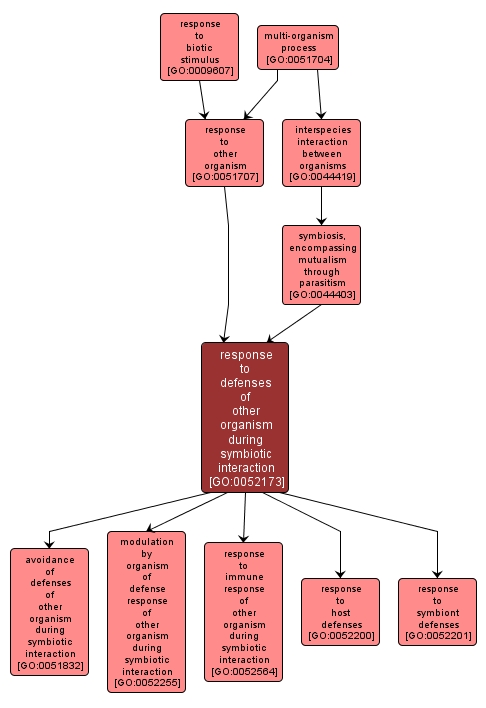GO TERM SUMMARY
|
| Name: |
response to defenses of other organism during symbiotic interaction |
| Acc: |
GO:0052173 |
| Aspect: |
Biological Process |
| Desc: |
A change in state or activity of a cell or an organism (in terms of movement, secretion, enzyme production, gene expression, etc.) as a result of detecting the defenses of a second organism, where the two organisms are in a symbiotic interaction. |
|

|
INTERACTIVE GO GRAPH
|














